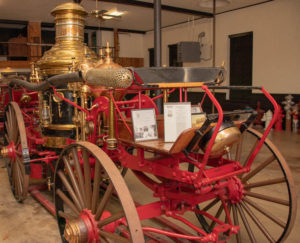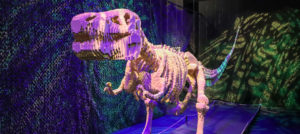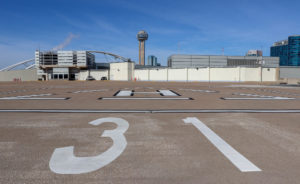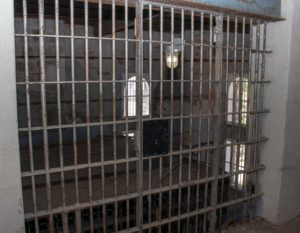Behind the Scenes of DART Light Rail
Dallas Area Rapid Transit(DART) – a complete public transportation system serving 13 cities in the North Texas area. Strolling down the streets of the Metroplex, it is pretty likely that you will come across a DART bus, light rail vehicle(LRV), or paratransit van. Although everyone has their personal preference, I like the light rail system out of all the options that DART offers. It’s an amazing setup if you think about it – 30.1 million passenger trips in 2017, run on 93 miles worth of tracks. But what goes on behind the scenes to ensure that your train comes on time and takes you where you need to be? I decided to find out Thursday afternoon, with a visit to the DART Central Rail Operations Facility. This is one of two places where the LRV fleet is maintained and kept in optimum condition.
Arriving at this huge facility on the south side of town, I met up with my tour guide, shop manager Brad Bayer. Brad is a veteran at this – he has been doing light rail maintenance since DART started light rail service in 1996! Without delay, we began our tour on the main shop floor, where he first took me to a machine with grates on it.
This contraption is nothing other than the wheel truing machine, which ensures that the “roundness” of the many wheels onboard the LRV are adequate. Computers in this sophisticated device can remove any defects as needed with precision to maintain safety.
Right behind the wheel truing machine were tracks – four of them. Having all these tracks ensures that maintenance can be performed simultaneously on multiple LRVs.
Huge screw jacks are able to lift an entire LRV effortlessly! I was quite surprised that the system isn’t hydraulic based.
You may be wondering – where do all the wheels go for service? There is a special section in the shop for them. Some are here to be overhauled, while others are undergoing various repairs. All of them are being serviced by trained mechanics, who work diligently to ensure the proper functionality of these crucial pieces of equipment.
One of the questions I had was whether the LRVs are all-wheel drive. The answer from Brad? Nope! In a typical setup, there are two end cab units, which provide thrust, with a center car in between. Think of this as two locomotives pushing the train cars in between. End cab wheels have a huge “power cable” connected to them, which provide electricity to propel them forwards and backwards.
Just as important as the wheels is air conditioning! Being that this is Texas, it would be unbearably hot even just a few minutes without some cold air. The roof-mounted air conditioning units onboard the LRVs are serviced here as well. Quite a few of them were seen in the shop, undergoing repairs or preventative maintenance.
Right next to it, the thing that makes the whole car come to life was laying there: a pantograph. What’s that? A pantograph is what connects the car up to the overhead high-voltage lines, giving the car electrical power. DART LRVs are environmentally-friendly, as they do not use any kind of fossil fuels and run solely via electricity.
From there, Brad and I hopped onboard an LRV to check out its driver cab. Having sat close to the first row many times when I rode DART, it was pretty cool to be able to go behind the door and explore all its controls!
The LRV has some pretty advanced features in its “cockpit”. One of the systems that passengers like myself are sure to appreciate is automatic train protection or ATP for short. ATP is designed to ensure that the LRV doesn’t go over a maximum speed, or get too close to other trains. Should the system detect either of those conditions, the whole train will automatically slow down or even come to a complete stop if necessary to prevent a conflict.
Brad also explained how the throttle worked. There are three power levels, P1-P3, along with three braking levels, B1-B3, that can be selected. When the driver pushes the throttle up, the train accelerates at the selected speed setting. The opposite is true for slowing this bad boy down.
Other controls include buttons to sound the horn and gong, open and close the doors, and operate the headlights.
Two-way radios keep the driver in constant communication with train dispatch.
The last stop was to the LRV car wash facility. I came across it as I first arrived, and knew that I wanted to see what a ginormous car wash looked like.
Brad explained the system worked using a series of laser beams. When an LRV enters and is situated in the proper place within the wash tunnel, indicators tell the crew that the wash cycle is about to commence. At the end, big dryers quickly remove all the water from the exterior. While the system is closed during periods of extremely cold weather, it is usually open. Trains that stay here overnight are run thru, ensuring that passengers the next day are greeted with a clean and shiny LRV!

In conclusion, having seen what it takes to keep the light rail system in working order, I am even more thankful for the men and women that work tirelessly to ensure that service runs smoothly. Dallas has one of the best rapid transit systems in the nation, and it simply wouldn’t be possible without all of the support personnel and maintenance facilities that DART employs.
Special thanks to the folks at DART for making this post possible!
























Who did you contact to get a tour? Are there tours for the general public?
Caleb, thanks for reading. Sorry about the late response – hadn’t blogged in years and just coming back to see old posts. No, to my knowledge public tours are not offered.